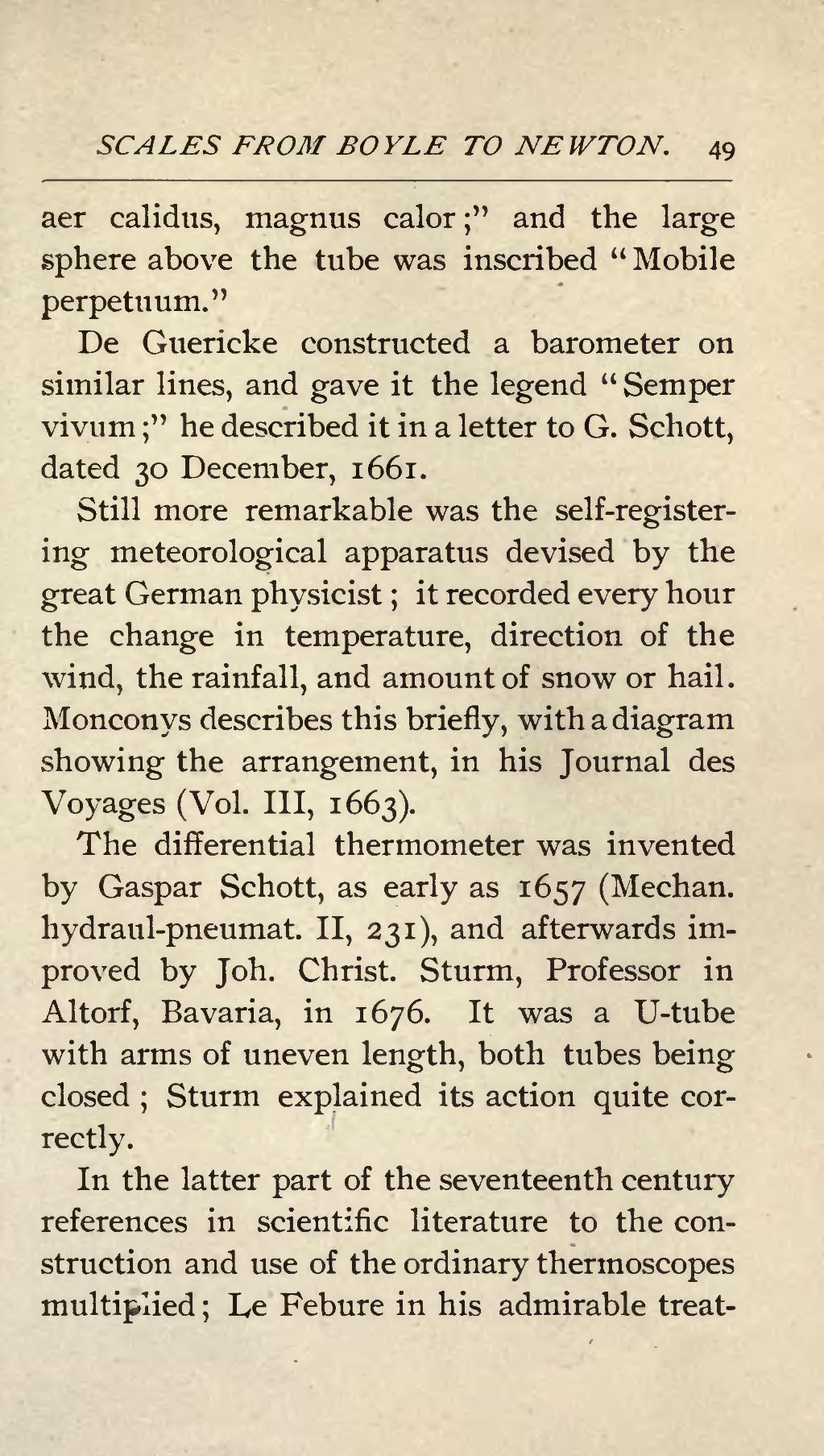aer calidus, magnus calor;" and the large sphere above the tube was inscribed "Mobile perpetuum."
De Guericke constructed a barometer on similar lines, and gave it the legend "Semper vivum;" he described it in a letter to G. Schott, dated 30 December, 1661.
Still more remarkable was the self-registering meteorological apparatus devised by the great German physicist; it recorded every hour the change in temperature, direction of the wind, the rainfall, and amount of snow or hail. Monconys describes this briefly, with a diagram showing the arrangement, in his Journal des Voyages (Vol. III, 1663).
The differential thermometer was invented by Gaspar Schott, as early as 1657 (Mechan. hydraul-pneumat. II, 231), and afterwards improved by Joh. Christ. Sturm, Professor in Altorf, Bavaria, in 1676. It was a U-tube with arms of uneven length, both tubes being closed; Sturm explained its action quite correctly.
In the latter part of the seventeenth century references in scientific literature to the construction and use of the ordinary thermoscopes multiplied; Le Febure in his admirable treat-
